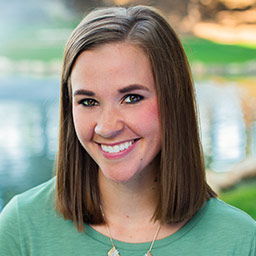
When you were in nursing school, you spent most of your time cramming for exams and daydreaming about your future self saving lives in scrubs. You probably never considered following in the footsteps of the nurse who was right in front of you—your instructor.
But after years spent in the fast-paced, high-pressure profession, a peaceful life in the classroom might be sounding pretty great. Whether you’re starting to feel the effects of nursing burnout or you’re just ready to take on a new challenge, becoming a nurse educator has a lot to offer.
Unfortunately, so few nurses venture down the path of nursing instruction that universities are often short-staffed on the expert faculty needed to train new recruits. This means now is the perfect time to consider becoming a nursing instructor.
Understanding the need for nurse educators
You’ve likely heard about the current shortage of nurses in America, but how much do you know about the scarcity of nurse educators? According to a study by the American Association of Colleges of Nursing (AACN), 56 percent of the 871 nursing schools surveyed said they had vacant full-time nursing faculty positions for the 2018–2019 academic year.1 The total vacancies among this group of schools added up to 1,715 full-time nurse educator positions.
There are a handful of factors contributing to this shortage of nursing instructors, including an impending wave of faculty retirements, a lack of master’s and doctoral nursing candidates and higher earning potential for clinical nursing positions. These issues all add up to one thing—a strong demand for qualified nurse educators.
In fact, jobs for nursing instructors are projected to grow at the much-faster-than-average rate of 15 percent through 2026, according to the U.S. Department of Labor.2 If you’re interested in helping fill this gap by training the nurses of the future, keep reading to gain some insider insight.
8 Things future nurse educators need to know
If you feel called to help shape the future of the field by becoming a nurse educator, consider this firsthand advice from seasoned professionals.
1. Teaching often starts small
You’re not likely to just wake up one morning, put on the coffee and think, “Hey, I should be a nursing instructor!” As with any journey, the path that leads nurses into education tends to start long before they apply for the job. For Tami J. Rogers, PhD, DVM, MSN and educator at the Rasmussen University School of Nursing, it started in nursing school.
“I was selected to be a peer tutor and help struggling students learn difficult skills and concepts,” Rogers explains. After graduating and spending time working in the field, she began working with local community college students in their last term as they rotated through her unit. “By then, I was officially enjoying being a nurse educator and wanted to pursue a full-time position in that specialty,” she recalls.
If you’re currently working as a nurse, you likely encounter teaching opportunities often during your shifts. Whether it’s educating a patient on treatment options or helping a new nurse learn the ropes, these moments may provide the spark that lights your passion to pursue the path of nursing instruction.
2. Nursing and teaching require similar traits
“A lot of the same traits and skills are needed for teaching as they are for nursing,” says fellow Rasmussen University nurse educator Allyson Hopperstad, DNP, RN, PHN. Specifically, excellent communication skills, enthusiasm, strong interpersonal skills, competence and professionalism cross over into teaching, according to Hopperstad. “That, and a genuine sense of caring for the individual!”
The intensely relational aspects of nursing are just as vital in education. Educators who know and respect their students have a much greater impact—much like nurses who take the time to respect and listen to their patients.
3. Nurse educators have systemic influence
Have you ever thought that a few little changes could make the healthcare industry safer or more efficient? Becoming a nurse educator means impacting every student graduating nursing school each year. Just imagine the effect a nursing school curriculum has on the healthcare industry over time.
Hopperstad spent some time working with newly hired nurses to ensure they were up to code and fitting into the work environment. When she realized how much she looked forward to coaching those new nurses, she opted to go back to school to become an educator and help improve the teaching standards of nursing.
“Teaching is a great way to stay current in practice and really lead and drive change in our profession from the ground up,” Hopperstad says.
4. There are several types of nurse educators
You’re already aware of the many career paths in nursing, but nurse educators also have various opportunities for advancement and specialization. Nurses who teach have the chance to constantly expand their portfolio of experience and credentials. Think about it—any nursing specialty out there requires nurse faculty to teach the students wanting to specialize.
In addition to specializing, you could expand into leadership opportunities like heading up your school’s nursing department. Some nurse educators even make the leap into research careers. There are several ways to expand your influence in the field you’ve devoted your career to.
5. Working as an educator can deepen your love of nursing (and of people)
Teaching is a powerful way to learn more about your subject matter. When you need to not only understand, but help others understand something, you learn it at a whole new level. “I found the transition [to teaching] an incredible professional journey where I learned an even deeper meaning of compassion,” Rogers says.
You may think the classroom wouldn’t offer as many opportunities to connect with people, but Rogers believes the opposite to be true. “I came to realize the many stories that come with each student, and the need to respect the unique needs of the adult learner,” she explains.
6. Nurse educators need more than nursing knowledge
You can see it all in the job title: A nurse educator is a nurse and a teacher. While the same compassion, attention and communication skills needed in nursing are important in an educator, there might be an additional learning curve.
“The nurse educator must possess skills that grow beyond nursing practice and obtain a knowledge of educational theory,” Rogers explains. Just as a great athlete doesn’t always have the makings of a great coach, the same is true in nursing. There are specializations and certifications that can help you hone your educating abilities, but not every nurse is cut out for the classroom.
7. Education can be more flexible than nursing
“Teaching offers a more ‘regular’ schedule,” Hopperstad says. “And it typically does not include holidays —a huge benefit for those with a family.” Nurses with children or family members needing care might also appreciate teaching situations that allow them to work primarily from home. Hopperstad points out that there are many education modalities to customize a schedule, such as online teaching. This variety of options could give you a more flexible schedule than the typical nursing routine.
Different teaching situations can also offer more or less clinical work depending on what you prefer. Nurses who need to get off their feet can find instructing positions that are less physically taxing than working the floor.
“You can still be in the clinical practice arena taking care of patients with your students, teaching in the classroom and also in the lab,” Hopperstad explains.
8. You need an MSN to get started
The minimum education required by nearly all boards of nursing is a Master of Science in Nursing (MSN) degree, according to Rogers. She adds that a nurse educator specialization is definitely recommended.
“I recommend pursuing specialty certifications within education, including Certified Nurse Educator (CNE),” Rogers says. She explains that licensure is mandatory, but certifications are voluntary—and therefore can be very powerful in setting applicants apart.
No matter how you arrive at becoming a nursing instructor, Hopperstad emphasizes that unique paths and experiences are what makes nursing great. There is no one-size-fits-all nurse, and that is a very good thing.
“A blend of nurses walking different paths is what makes the education blend unique to meeting the diverse needs of our ever-changing healthcare landscape,” Hopperstad states.
Nurture the nurses of the future
The transition from nursing school to becoming a nurse is much harder than the transition from nursing to becoming a nurse educator, according to Hopperstad. Nursing instructors get the opportunity to pioneer new nursing practices and inspire the next cohort of professionals. With more education formats than ever before and the shortage of nursing faculty nationwide, there’s no better time than now to join the ranks.
If you’re ready to step up and help educate and empower the next generation of nursing professionals, learn how Rasmussen University can help prepare you for success with our Master of Science in Nursing degree program.
1 American Association of Colleges of Nursing, “Special Survey on Vacant Faculty Positions for Academic Year 2018–2019,” October 2018.
2 Bureau of Labor Statistics, U.S. Department of Labor, Occupational Employment Statistics, [data accessed June 2019] www.onetonline.org. Information represents national, averaged data for the occupations listed and includes workers at all levels of education and experience. Employment conditions in your area may vary.
EDITOR’S NOTE: This article was originally published in 2016. It has since been updated to include information relevant to 2019. Insight from Rogers and Hopperstad remains from original article.




